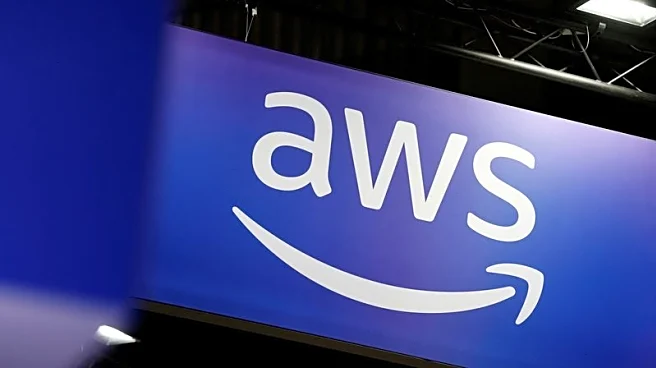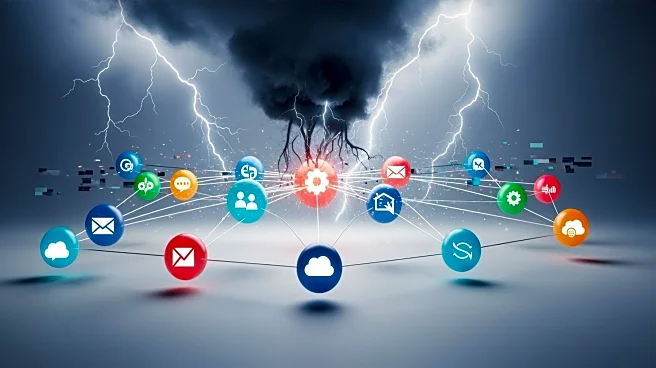What's Happening?
Amazon Web Services (AWS) experienced a significant internet outage on Monday, impacting numerous popular online services. The issue began early in the morning, with AWS reporting increased error rates
in its US-EAST-1 Region. This led to disruptions in services such as Venmo, Microsoft Outlook, Zoom, Snapchat, and Lyft, among others. AWS has been actively working to resolve the problem, applying internal migrations and mitigation steps. By early afternoon, AWS reported significant signs of recovery, although some queued requests were still being processed. The outage was tracked by DownDetector, which showed a spike in reports of service disruptions across the internet.
Why It's Important?
The outage highlights the critical role AWS plays in supporting a vast array of internet services. As a major cloud computing provider, AWS's functionality is essential for the operation of many online platforms. Disruptions like this can have widespread implications for businesses and consumers who rely on these services for daily operations and communication. The incident underscores the vulnerability of digital infrastructure and the potential economic impact of service interruptions. Companies affected by the outage may face operational challenges, while consumers experience inconvenience and potential loss of productivity.
What's Next?
AWS is continuing to work on resolving the issue and has promised further updates as they progress. Businesses affected by the outage may need to assess their reliance on AWS and consider contingency plans for future disruptions. The incident may prompt discussions on the resilience and reliability of cloud services, potentially influencing future investments in infrastructure improvements. Stakeholders, including businesses and consumers, will be closely monitoring AWS's recovery efforts and any long-term solutions implemented to prevent similar occurrences.
Beyond the Headlines
The outage raises questions about the concentration of internet services under a few major providers like AWS. This centralization can lead to significant disruptions when issues arise, highlighting the need for diversified infrastructure and backup systems. The event may also spark debates on the security and stability of cloud computing, encouraging companies to explore alternative solutions to mitigate risks associated with service outages.












